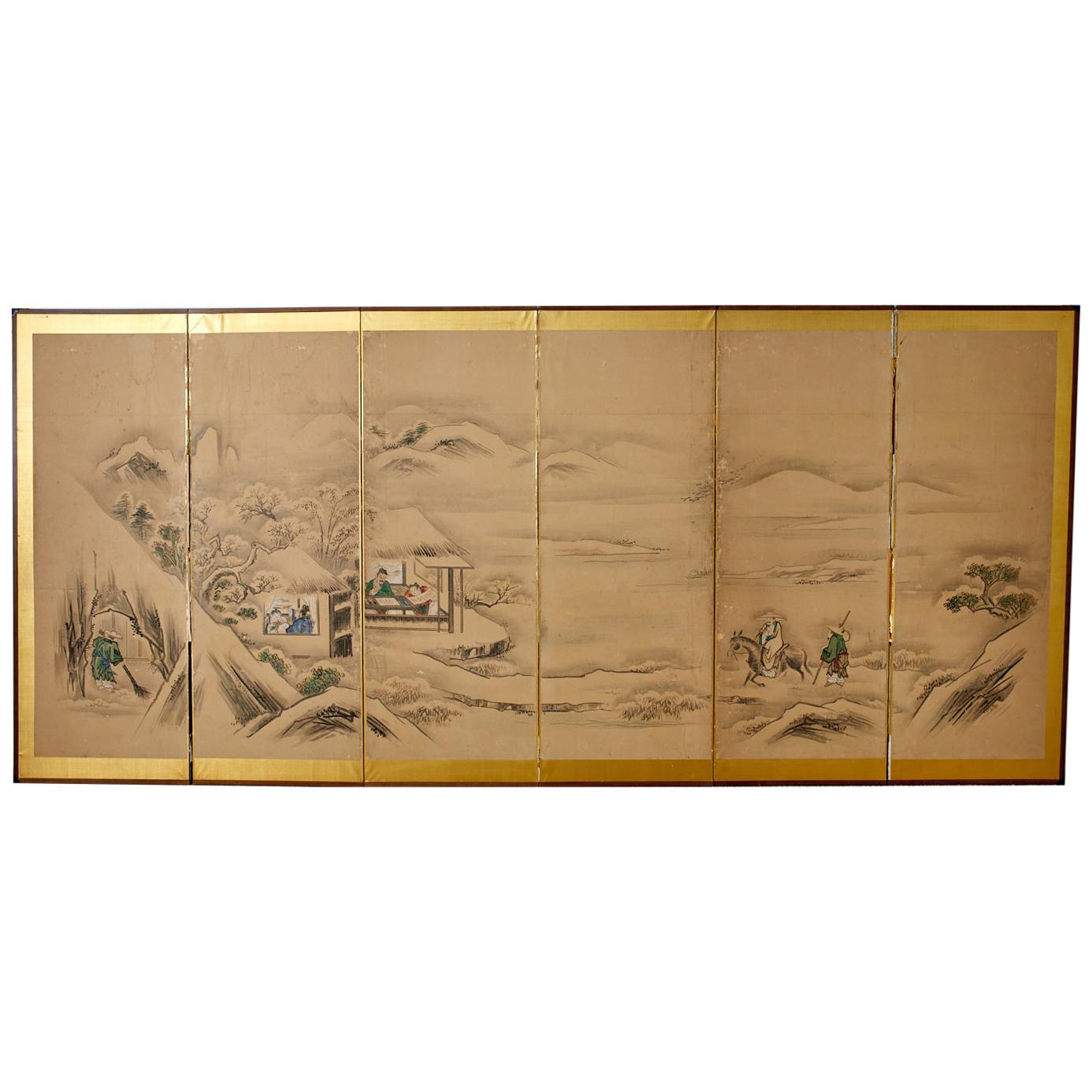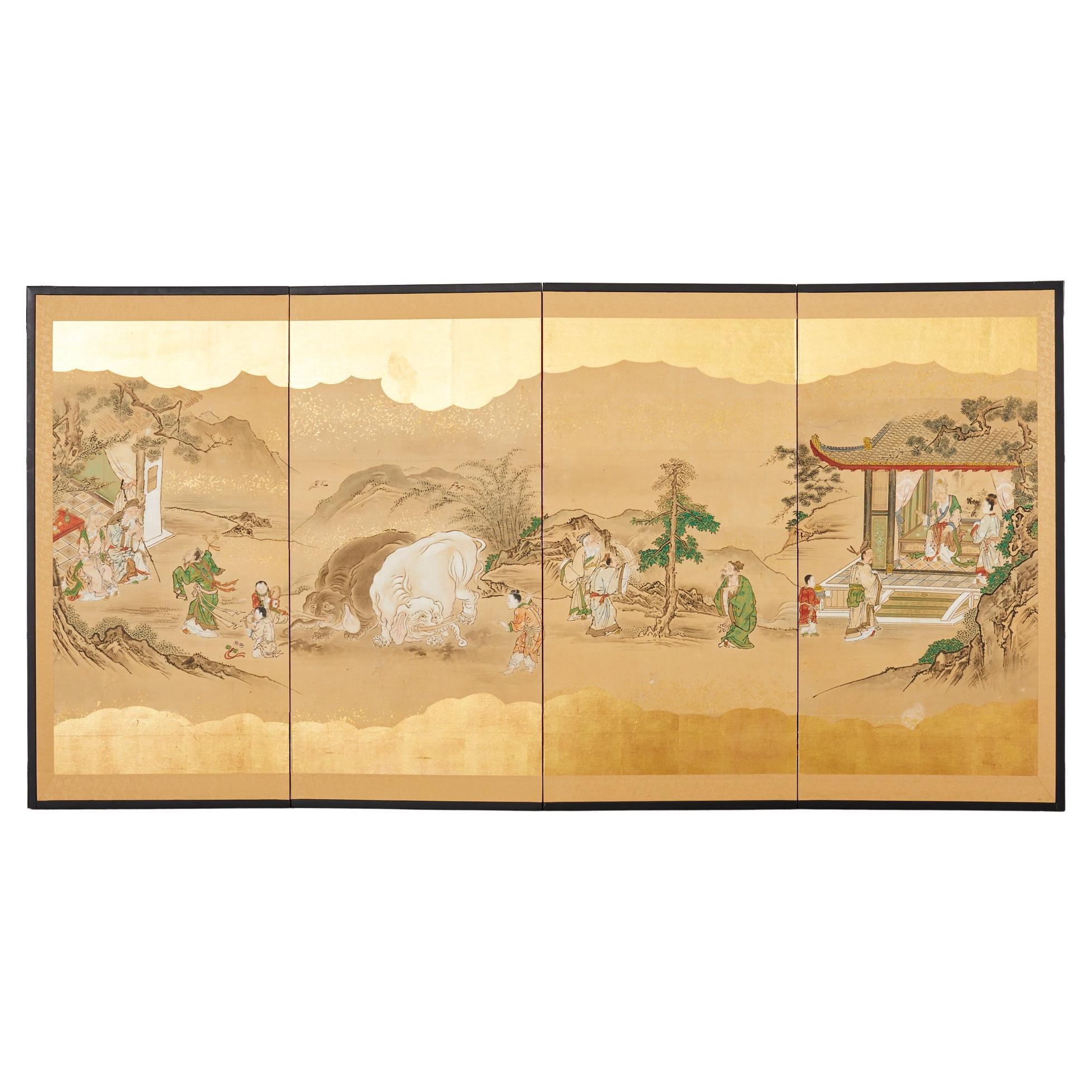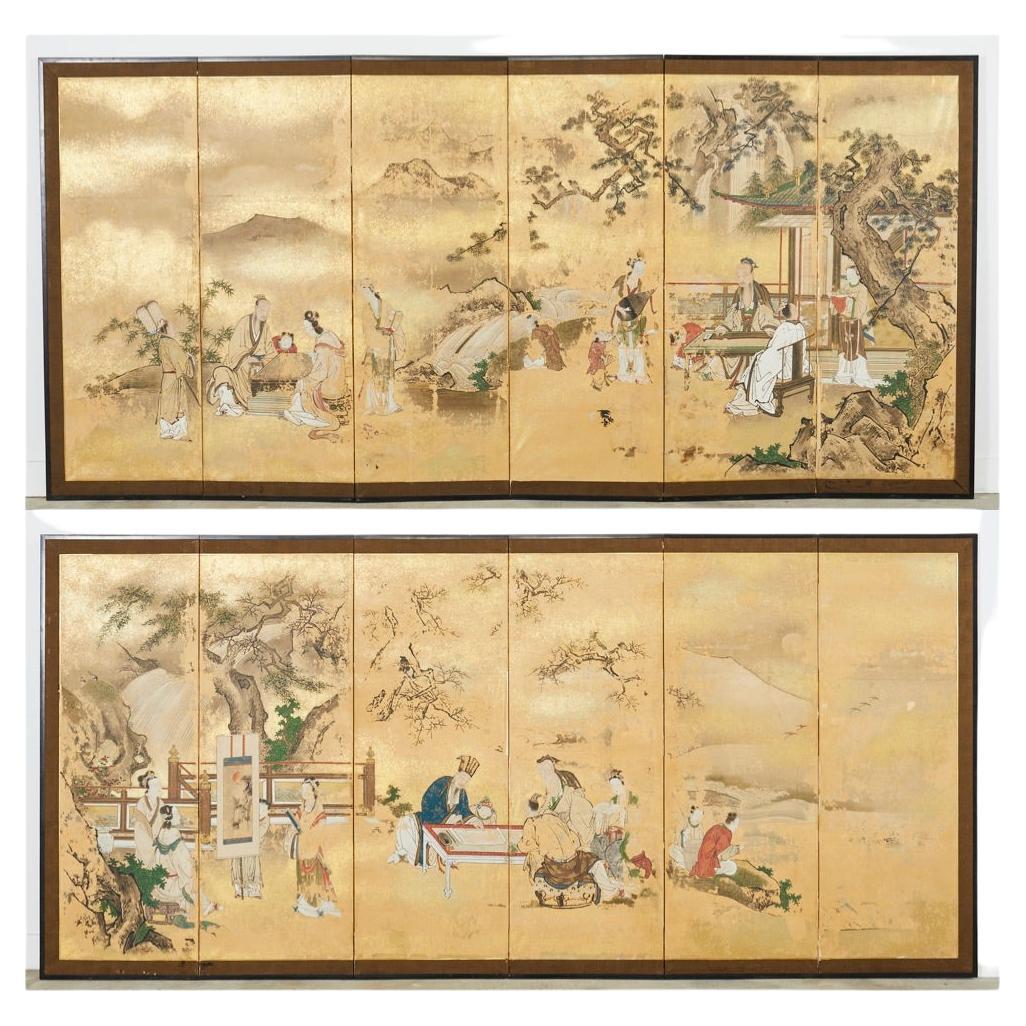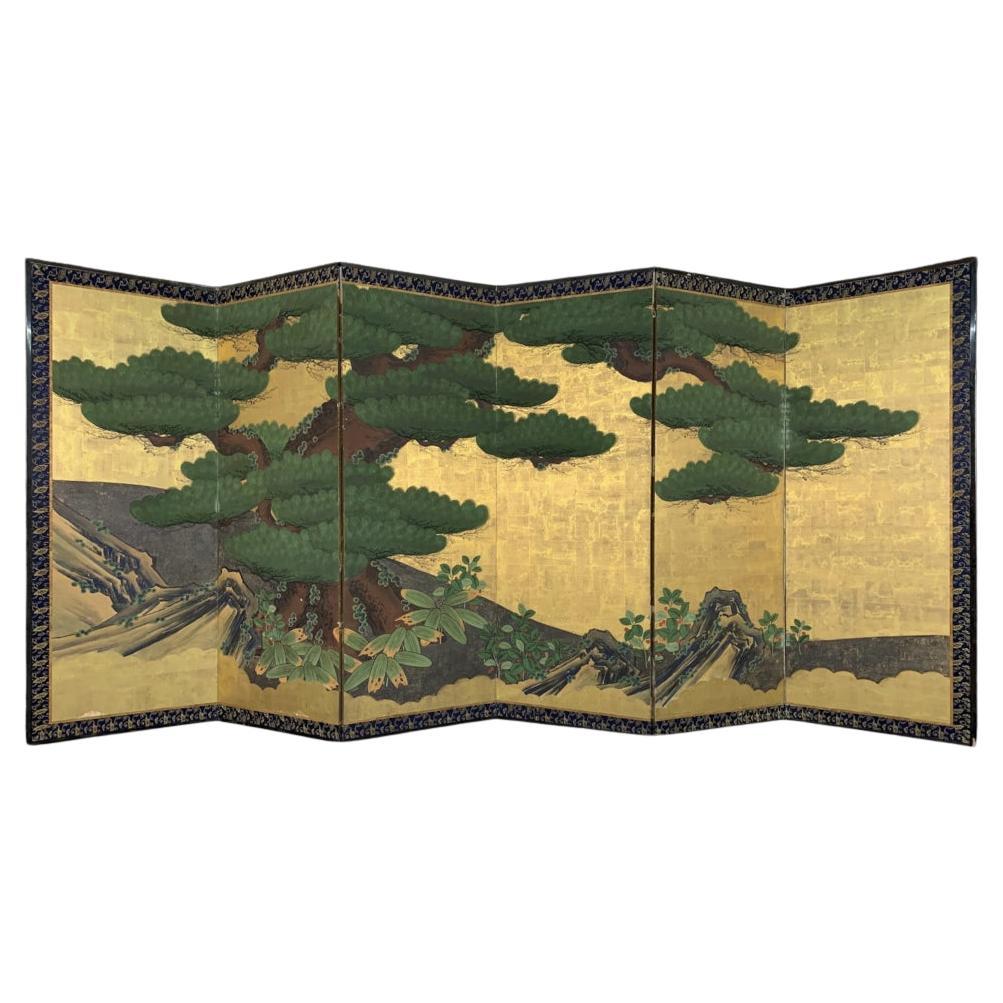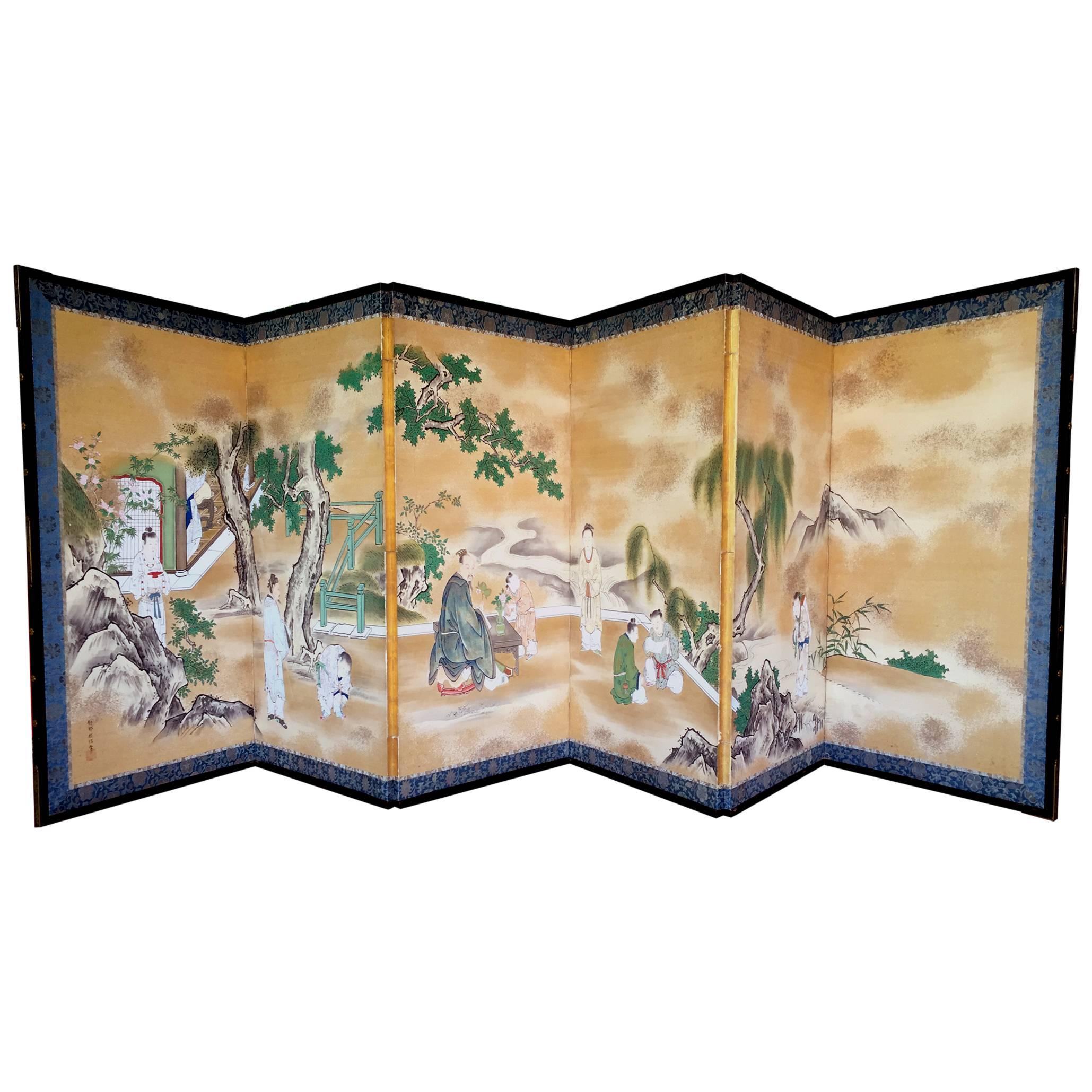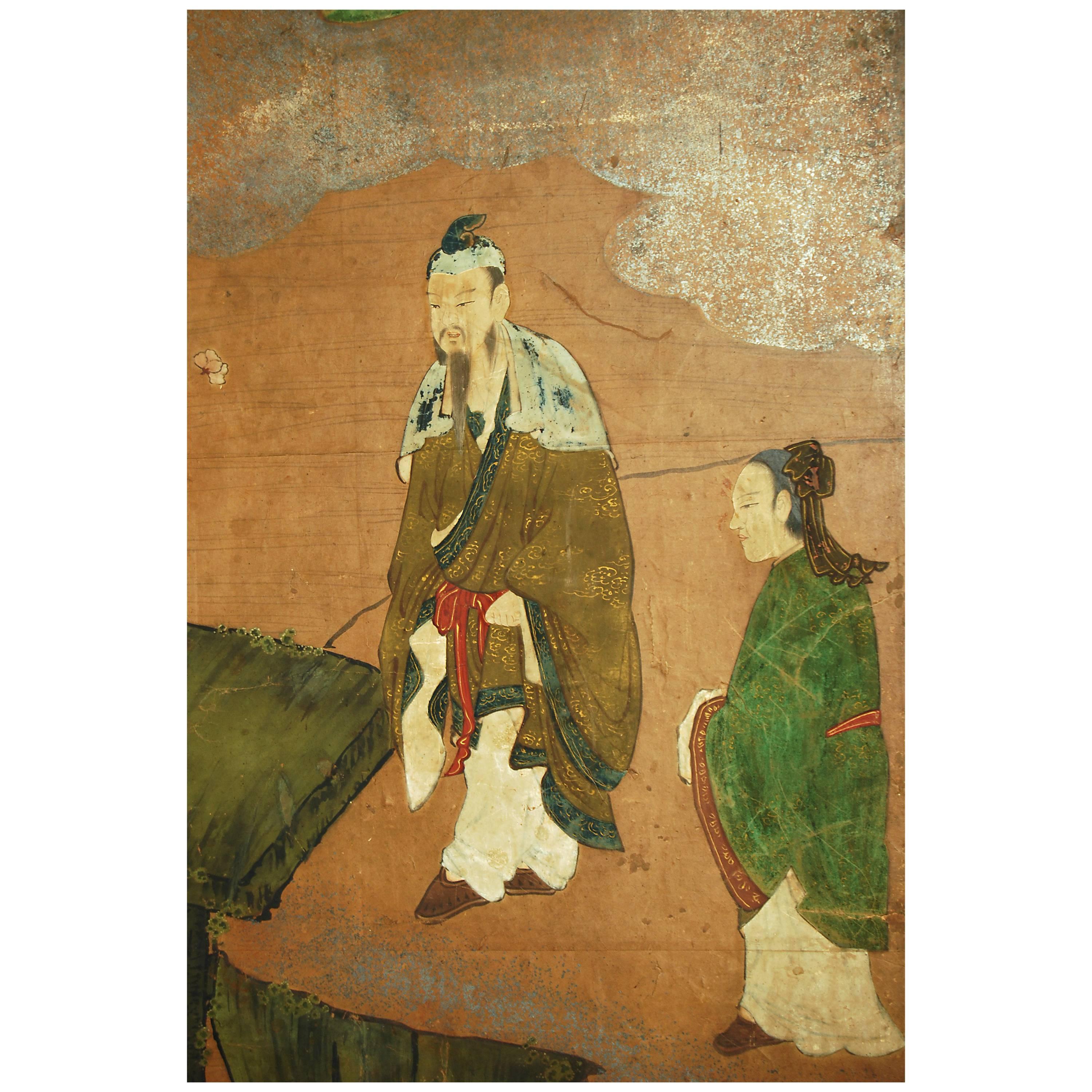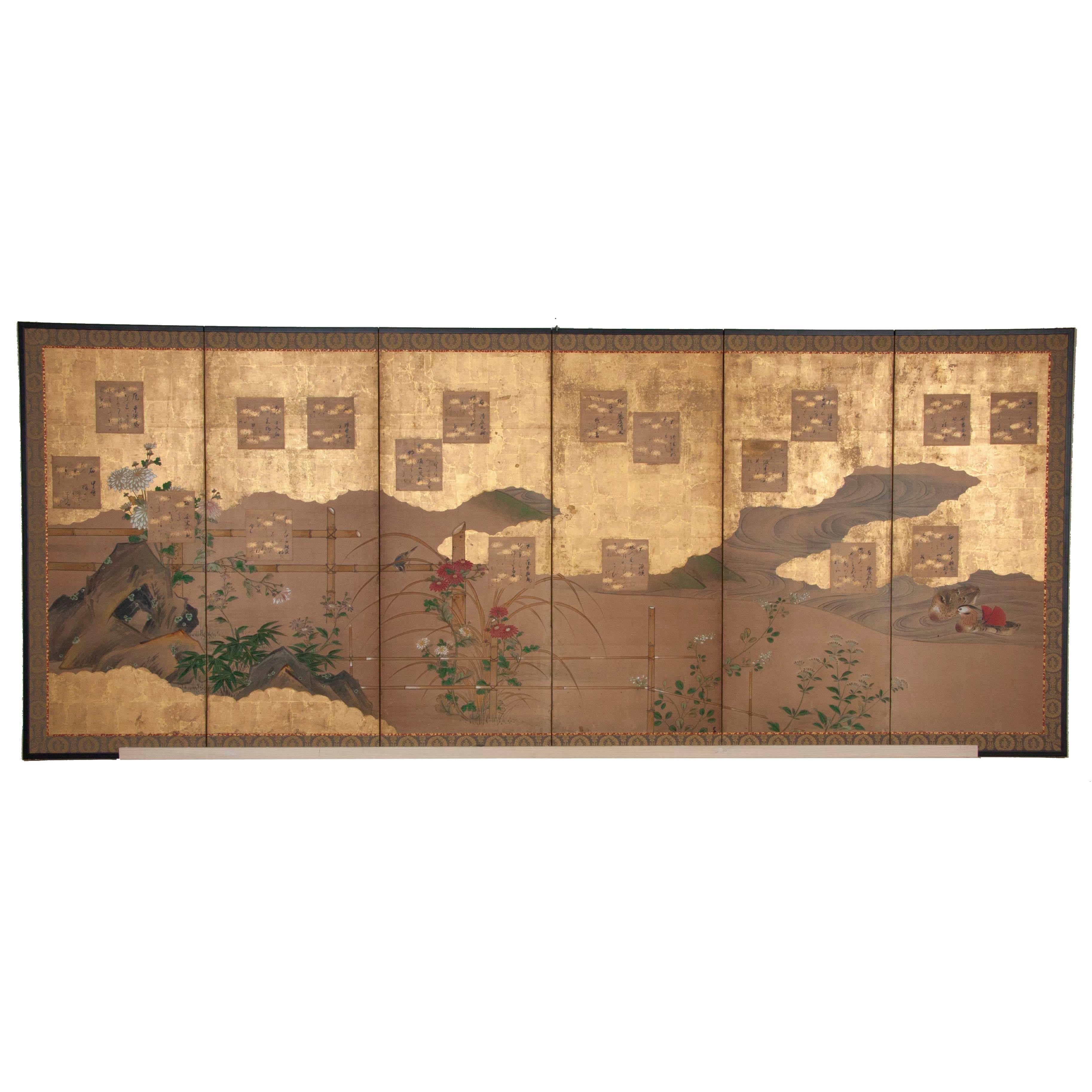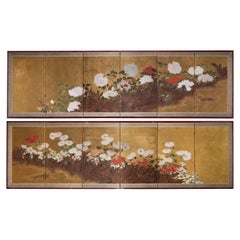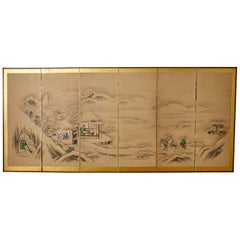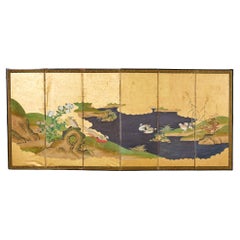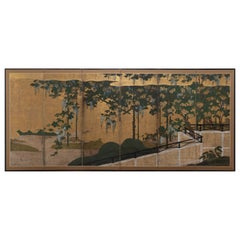
Six-Panel Japanese Folding Screen with Grapevine, Kanō School
View Similar Items
Want more images or videos?
Request additional images or videos from the seller
1 of 10
Six-Panel Japanese Folding Screen with Grapevine, Kanō School
About the Item
About the Seller
5.0
Recognized Seller
These prestigious sellers are industry leaders and represent the highest echelon for item quality and design.
Established in 2005
1stDibs seller since 2018
10 sales on 1stDibs
Typical response time: 1 hour
More From This SellerView All
- Japanese Folding Screen with a Spring Landscape, Kano School, 19th CenturyLocated in Milano, ITThe scene is dominated by a plum tree in bloom under which a couple of paradise birds is courting. The screen is crossed by a luxuriant creek, a typical feature of the springtime.Category
Antique 19th Century Japanese Paintings and Screens
MaterialsPaper
- Pair of Six-Panel Folding Screens with Peonies and Other FlowersLocated in Milano, ITA pair of six-panel folding screens with peonies and other flowers 19th century Each 72.5 by 241 cm Small and elegant screens with an ideal scene depicting peonies and other flower species...Category
Antique 19th Century Japanese Paintings and Screens
MaterialsPaper
- Pair of Japanese Two-Fold Screens with Flower Arrangements and Rare BirdsLocated in Milano, ITKaramono with flower arrangements and rare birds Edo period, 18th century Pair of two-panel folding screens Ink, colors, gofun and gold leaf on paper Each 170 by 165 cm ...Category
Antique 18th Century Japanese Paintings and Screens
MaterialsPaper
- Japanese Two-Panel Screen with Scenes at the Pleasure Quarters, 18th CenturyLocated in Milano, ITIn the pleasure districts, the stringent codes were meant to be forgotten. In this painting, some clients are watching from outside the teahouse, while some are entering, one of them...Category
Antique 18th Century Japanese Paintings and Screens
MaterialsPaper
- Pair of Japanese Screens with Flowers of the Four Seasons, 19th CenturyLocated in Milano, ITThis pair of screens belongs to a genre of lyrical paintings of flowers, grasses, and other plants that flourished around the middle of the 17th century and became a specialty of the Sôtatsu studio. The use of a rather complex composition of clusters of flowers and the puddling of ink was initiated by Tawaraya Sôtatsu, the founder of the Rimpa School, who was active from 1600 until 1642. The screens are abstract and decorative but there is, at the same time, a keen sense of naturalism not only in the attention to accurate detail but in the profusion of vegetation. The passage of the year is symbolized by the variety of plants that bloom in different seasons. The tarashikomi - here used on leaves, petals and trunks - is a Classic Rinpa technique in which pale black ink or a color is brushed onto an area of a painting and then either darker ink, or the same or a contrasting color, is dropped into the first before it has completely dried, creating an effect of pooled colors with softly blurred edges. Its delicacy, preciousness, and effeminacy are identified with the over-refinement of its patrons, while the vigor, monochromatic discipline, sharp observation, and virile forms of the Kano school are a testament to the vitality of the rising warrior class. The plants are almost all identifiable: in the summer-spring part, you can find wheat, buttercups, irises, begonias, hydrangeas, coral bells...Category
Antique 19th Century Japanese Paintings and Screens
MaterialsPaper
- Hanging Scroll by Kamisaka Sekka, JapanLocated in Milano, ITThis painting represents a man waiting under a dark tree. The composition is extremely simple but suggestive. The artist, with few elements, can, in fact, create a vivid and dynamic scene, based on the tension between the strong ink stain that renders the tree and the elegant figure of the man, dressed in an aristocratic robe. Painter and designer, Kamisaka Sekka...Category
Early 20th Century Japanese Paintings and Screens
MaterialsPaper
You May Also Like
- Japanese Six Panel Kano School Winter Landscape ScreenLocated in Rio Vista, CALarge Japanese Meiji period six-panel screen depicting a winter landscape with a Chinese sage visiting friends in a country villa. Ink and vivid color pigments on mulberry paper mounted to a gilt background. Painted in the 19th century Kano school...Category
Antique 19th Century Japanese Meiji Paintings and Screens
MaterialsMetal
- Japanese Meiji Six Panel Screen Kano School Bird WaterscapeLocated in Rio Vista, CAStunning late 19th century Japanese Meiji period six panel byobu screen featuring a deep blue waterscape with pheasants and ducks. Made in the Kano sch...Category
Antique 19th Century Japanese Meiji Paintings and Screens
MaterialsBrass, Gold Leaf
- 19th Century Japanese Edo Six Panel Kano School Landscape ScreenLocated in Rio Vista, CALate Edo period 19th century Japanese six-panel landscape screen featuring a cypress tree over a flowering hibiscus with a pair of hototogisu birds. Kano school painted with ink and ...Category
Antique 19th Century Japanese Edo Paintings and Screens
MaterialsSilk, Wood, Paper
- Antique Japanese Six-Panel Screen by Kano ChikanobuLocated in Prahran, VictoriaLate 17th century Kano school peony landscape screens. One of a pair of screens signed: Hogan Josen Fujiwara Chikanobu Hitsu - Kano Chikanobu (Shushin) ...Category
Antique Early 18th Century Japanese Edo Paintings and Screens
MaterialsGold Leaf
- Japanese Edo Four Panel Screen Kano School Filial PietyLocated in Rio Vista, CAEarly 19th century late Edo period Japanese four-panel screen depicting examples from the 24 paragons of filial piety. Painted in the Kano School style featuring figures in colorful,...Category
Antique 19th Century Japanese Edo Paintings and Screens
MaterialsBrass, Gold Leaf
- Antique Japanese Six-Panel Screen by Kano Chikanobu "Shushin"Located in Prahran, VictoriaLate 17th century Kano school peony landscape screens. Both screens signed: Hogan Josen Fujiwara Chikanobu Hitsu - Kano Chikanobu (Shushin) (1660 - 1728...Category
Antique Early 18th Century Japanese Edo Paintings and Screens
MaterialsGold Leaf
Recently Viewed
View AllMore Ways To Browse
Momoyama Period
Grapevine Art
Small Folding Screen
Japanese Screens Six Fold
Japanese Screen Kano School
Kano School Screen
Pair Folding Screens
Pair Of Folding Screens
Fire Folding Screen
Folding Screen Fire
17th Century Japanese Paintings
Edo Period Screen Ink
Small Japanese Gold Screen
Kano Panel
Edo Folding Screen
Antique Fence Panels
Edo Japanese Screen Kano
Bamboo Folding Screen
